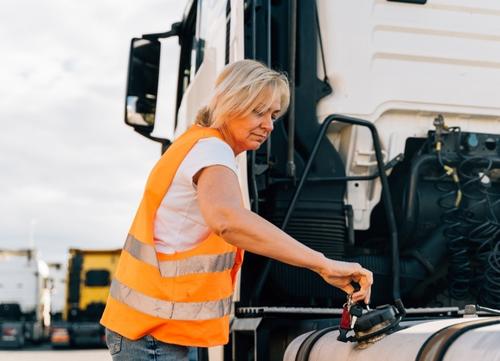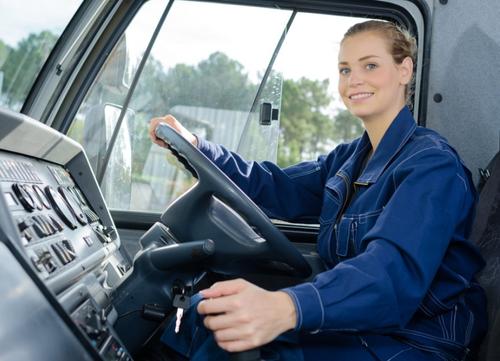With over 2.5 million people working in the haulage and trucking industry, it is the fifth-largest employer in the UK. The industry is responsible for moving 89% of all goods directly by road, including vital food, engineering, and consumer products, contributing a staggering £124 billion to the UK economy. As we approach International Women's Day, it's essential to recognise that the trucking industry has traditionally been male-dominated, and there are many benefits to encouraging more women to pursue a career in trucking. But it's important to highlight that there are advantages to hiring drivers of all genders.
While female truckers are a growing group in the UK, they still make up a very small minority. Of the 315,000 nationally registered truck drivers, around 2,200 are female, with the majority in their early 20s.
So why isn’t trucking as popular with women as it is with men? When recruitment agency HR Go polled women as to why they aren’t working in haulage, many cited the impact it might have on their family life. As women are traditionally likely to be primary caregivers for children and other family members, the knock-on effect that potentially long shifts and time away from home can have has put many prospective female truckers off the industry. However, this operational structure is becoming less common as a more significant number of haulage and trucking companies prioritise workplace flexibility to ensure a healthy work-life balance.
There is also a misconception among some candidates that driving is a ‘man’s world’, where drivers need to be physically strong and robust. However, with growing levels of automation and developments in equipment, the ‘strong and able’ worker stereotype is becoming less and less accurate.

It’s clear that female representation in the trucking industry is moving in the right direction. However, a significant way to support this progress would be for a greater number of haulage and trucking companies to focus elements of their hiring process on women. Clearly, there is an appetite for this among prospective female candidates, too, with a Freight Transport Association Poll finding that 79% of respondents voted ‘Yes’ when asked if they would be willing to drive a 44-tonne truck for a job.
The number of female truckers is growing in the UK, but women still make up a very small minority of drivers. Of the 315,000 nationally registered truck drivers, around 2,200 are female, with the majority in their early 20s. While some women are discouraged from working in haulage because of the potential impact on their family life, the trend is changing as a growing number of haulage and trucking companies prioritise workplace flexibility to ensure a healthy work-life balance. Additionally, it is worth noting that the stereotype of truck driving as a male-dominated profession is increasingly inaccurate as the industry modernises and demands more diverse skill sets.
Haulage and trucking companies that choose to support this move towards female representation could also experience significant benefits. Let’s break down some of the critical benefits of hiring female truck drivers, from safety to turnover and filling staff shortages.

The shortage of HGV drivers became national news during the Covid-19 pandemic, with an estimated 70,000 drivers leaving the profession since the Coronavirus outbreak. 12,500 of these were EU nationals, indicating the Brexit process as one of the impacting factors on the shortage. The Recruitment and Employment Confederation also cites low wages and less favourable working conditions for drivers as additional reasons.
By proactively encouraging more female drivers into the workforce, companies could increase their recruitment pool and help to solve staff shortages. In addition, Recruiting from a more diverse pool can also relieve pressure on existing drivers, allowing them a healthier work-life balance and enabling businesses to expand.
A low turnover can pay dividends in an industry as short-staffed as truck driving. Many haulage and trucking companies fund, either entirely or in part, the training of their driving candidates. The cost of training a commercial driver can be steep, too, often ranging from £985 for a 7.5-tonne license up to an eye-watering £3,645 for an HGV Class 1 license. This means that encouraging staff to remain in-house minimises cost and efficiency.
Omnitracs found that women drivers tend to stick with a company longer than their male counterparts. So for organisations keen on retaining their top talent and reducing the costs of training new staff, greater loyalty could be a key benefit of hiring female truck drivers.

Along with a push to diversify your driver base, there are numerous other ways to benefit your fleet. For more handy tips for drivers and fleet managers, as well as industry updates, take a look at our news page.
Or, to see how SG Fleet can help you, visit our comprehensive fleet solutions page. Here you can find information regarding our bespoke fleet management and leasing services. Whatever your business requirements, our dedicated team will ensure you receive the support you need. Alternatively, get in touch for more detailed information about the benefits we can offer.
- How Our Commercial Vehicle Team Can Help You
- Road Safety Week: Think Don’t Drink
- Wellbeing Behind The Wheel: Supporting Your Fleet Drivers